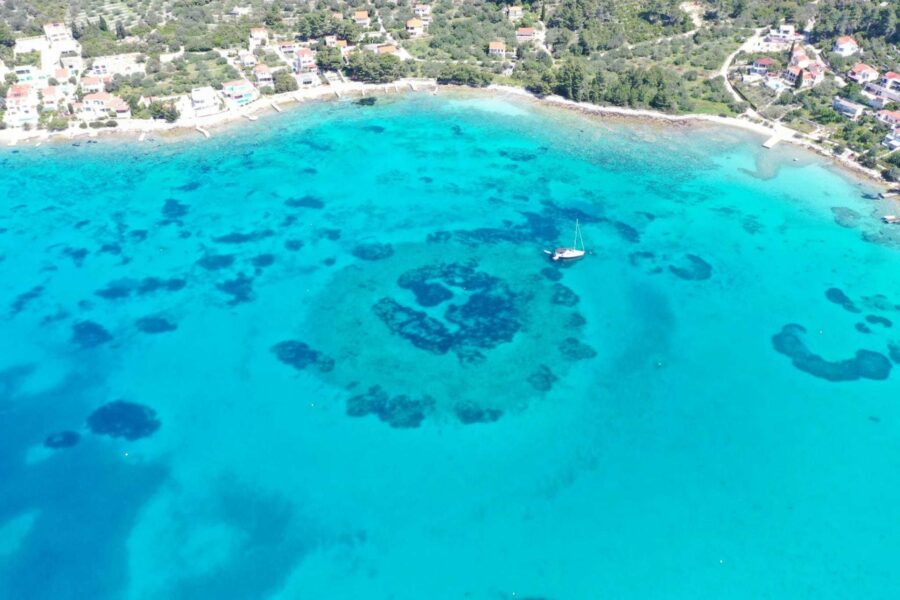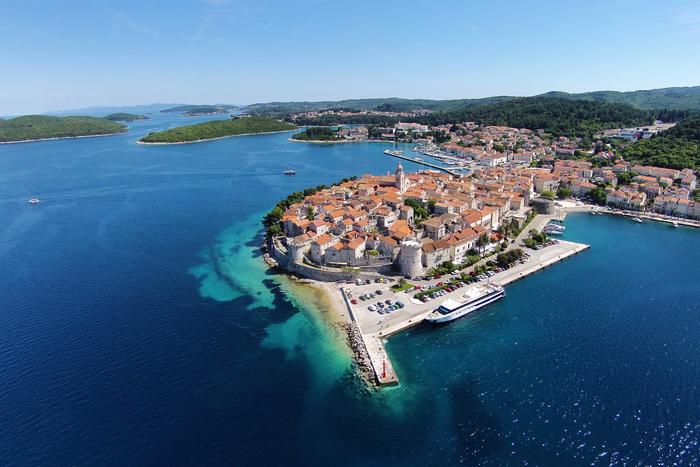Croatia’s Korcula Island, the island of my birth which I am also currently visiting, is ringed with archaeological sites dating back to 20,000 BC. But the discovery of a 7,000-year-old road, that once connected an ancient site with the island, was completely unexpected. Korcula, part of the Adriatic archipelago, was originally joined to the mainland but when sea levels began to rise at the end of the last Ice Age in 12,000 BC, flooding more or less led to the current layout from thousands of years ago.



In recent months Archaeologists from the University of Zadar discovered a nearly 7,000-year-old road under the sea off the coast on the outskirts of the town of Korcula. Carefully stacked stone slabs formed a four-meter-wide road that connected Korcula to an artificially created peninsula made by the neolithic nearby Island of Hvar culture in about 4900 BC. The peninsula gradually sunk into the sea over time, but its relatively sheltered location meant much of the settlement was well preserved. Ancient artifacts were found along the road as well.
Once an artificial island, the ancient site of Soline was discovered in 2021 by archaeologist Mate Parica of the University of Zadar in Croatia while he was analyzing satellite images of the water area around Korčula.
After spotting something he thought might be human made on the Adriatic Sea floor, Mate Parica from the University of Zadar and a colleague dove to investigate.
At a depth of 4 to 5 meters in the Mediterranean’s Adriatic Sea, they found stone walls that may have once been part of an ancient settlement. The landmass it was built upon was separated from the main island by a narrow strip of land.
The newly discovered prehistoric road has been protected from powerful waves for millennia thanks to these islands too. The thoroughfare was constructed of carefully stacked stone slabs. Today it’s covered in a thick layer of mud, as one might expect for an underwater structure where relatively calm and protected sea allows for centuries of sediments.
Researchers think that the Neolithic Hvar culture, which once inhabited the eastern Adriatic, constructed the now-submerged Soline (on te outskirts of the old town of Korcula) settlement and the ancient passageway that connected the islands.
Through radiocarbon analysis of preserved wood, the entire settlement was estimated to date back to approximately 4,900 BCE.
“People walked on this [road] almost 7,000 years ago,” the University of Zadar stated about its most recent discovery.
This remarkable research is the result of collaboration among experts from Dubrovnik Museums, the Museum of the City of Kastela, the University of Zadar, the City Museum of Korcula, along with the assistance of photographers and divers.
The research was led by Mate Parica from the University of Zadar, and the participants were Domagoj Perkic (Museums of Dubrovnik), Ivan Suta and Vedran Katavic (Kastela City Museum), Katarina Batur (University of Zadar), Marta Kalebota (Korcula City Museum), Eduard Viskovic ( Kantharos), with the assistance of Dalibor Cosovic from the Diving Center Lumbard Blue on the Island of Korcula.
This isn’t the only secret that Korcula’s been keeping. The same research team has discovered another underwater settlement on the opposite side of the island that is strikingly similar to Soline and produces some intriguing Stone Age artifacts.
University of Zadar archaeologist Igor Borzic recently noticed intriguing structures beneath the bay’s waters. So the researchers diving at the Soline site went undersea exploring, and to their great delight, they discovered an almost identical settlement submerged at a depth of 4 to 5 meters.
While announcing the discovery of the Neolithic road, researchers also revealed details of their ongoing survey around Gradina Bay on the opposite side of Korčula. Here, the team has recently identified a second submerged settlement at a similar depth to Soline, which appears almost identical to the site discovered two years ago.
“Neolithic artifacts such as cream blades, stone [axes] and fragments of sacrifice were found at the site,” the University of Zadar adds
Around 12,000 years ago, the Neolithic era, also known as the new Stone Age, emerged in some parts of the world as people gradually transitioned from a hunter-gatherer lifestyle into farming and animal domestication, resulting in more permanent settlements of communities.
Multiple archaeological finds, skeletal remains, artifacts, computational modeling of genetic patterns, and many other sources such as 7,200-year-old Croatian cheese, contribute to our knowledge of Neolithic humans.
But island settlements from the Neolithic period aren’t found as often. So these are exciting finds for archaeologists, showing how our ancestors could adapt to different environments and build roads between them.
The sunken Neolithic settlement near Cape Soline on the island of Korcula has deservedly found its way on the map of important archaeological sites in a much wider Mediterranean and European context. Further research, a multidisciplinary approach and future analyses will certainly yield numerous new additional insights into the earliest periods of our prehistory.
Ina Vukic




